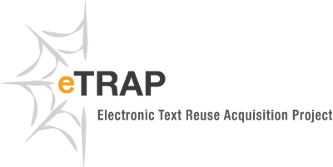Two Transcribers wanted!
(Targeted at students of German Literature or other Humanities subjects)
The early career research group eTRAP is looking for Student Assistants. The research group is associated with the Institute of Computer Science and operates from the Göttingen Centre for Digital Humanities (GCDH). Further information about the research group and its work can be found at https://www.etrap.eu.
Job description
We are looking for applicants interested in joining the research group on TrAIN, a new project which was recently awarded the sum of €20,000 by the University of Göttingen. TrAIN, which stands for Tracing Authorship in Noise, will run for the duration of six months from 1st June 2016. The aim of the project is to obtain digital and searchable copies of the original correspondence of the Grimm brothers – the famous authors of the Kinder- und Hausmärchen. The digital copies will be obtained in two different ways, namely by the use of an HTR (Handwritten Text Recognition) tool and multiple OCR (Optical Character Recognition) tools. The output of such work will then be used to further research in the fields of stylometry and authorship attribution.
We are hiring 2 students for the duration of 3 months (extendable contract) who will act as the transcribers of the team. They will work with Transkribus, an HTR tool used to transcribe handwritten texts.
